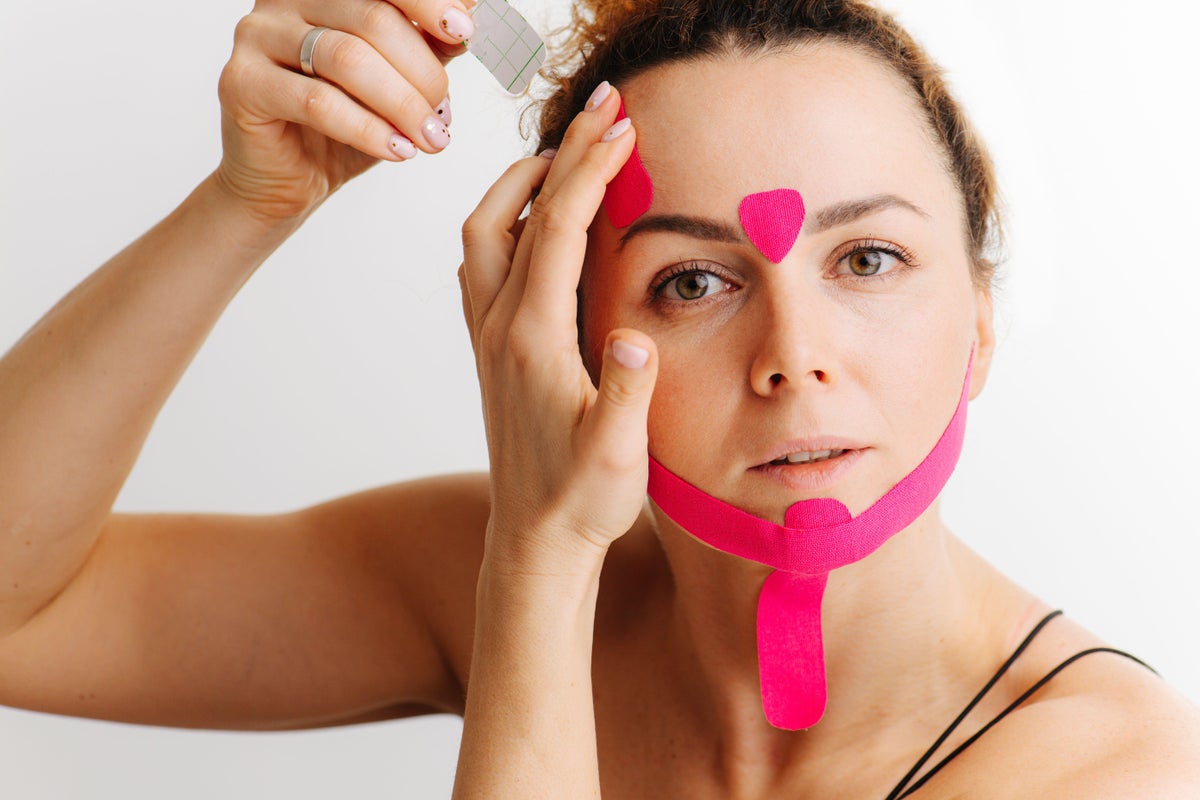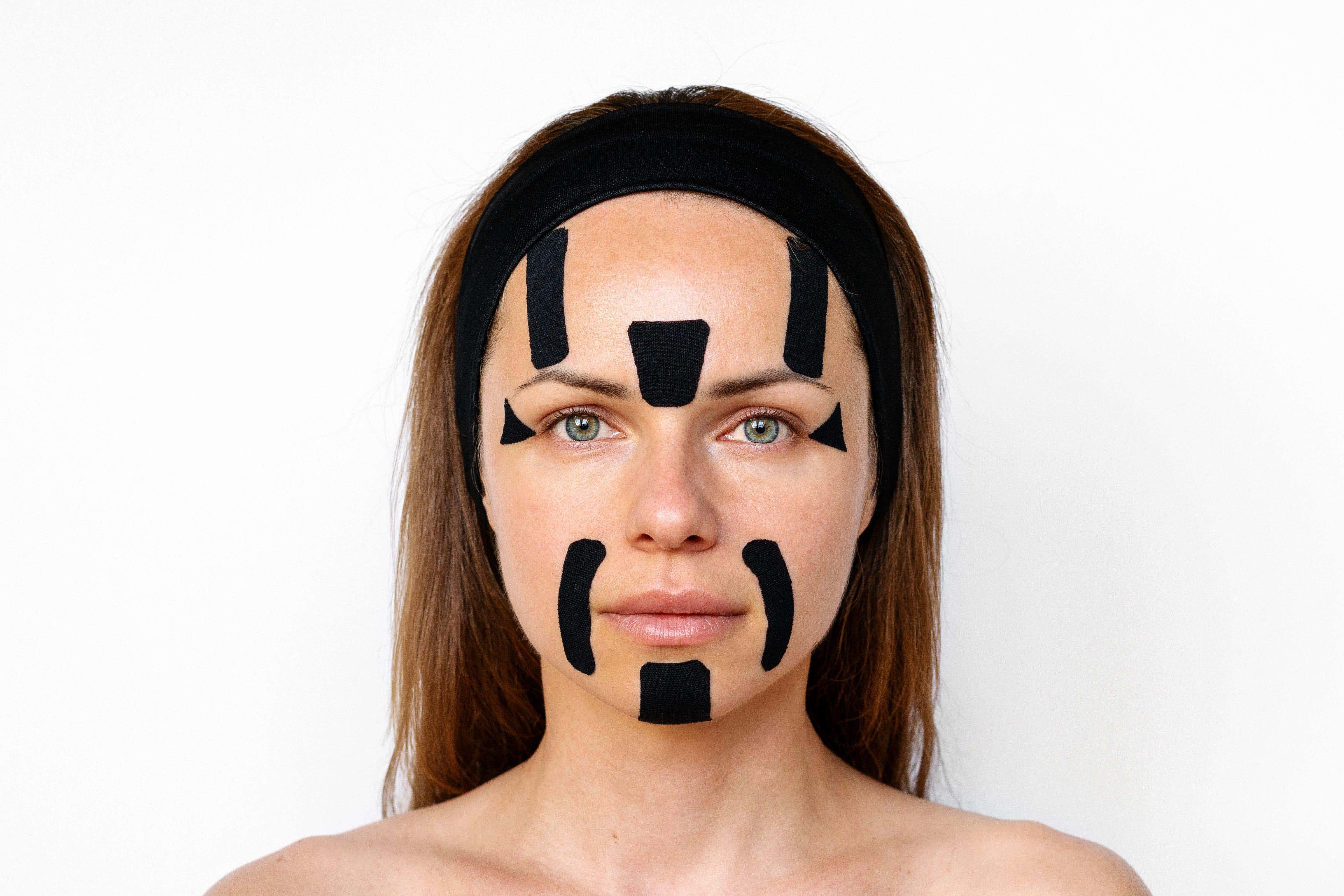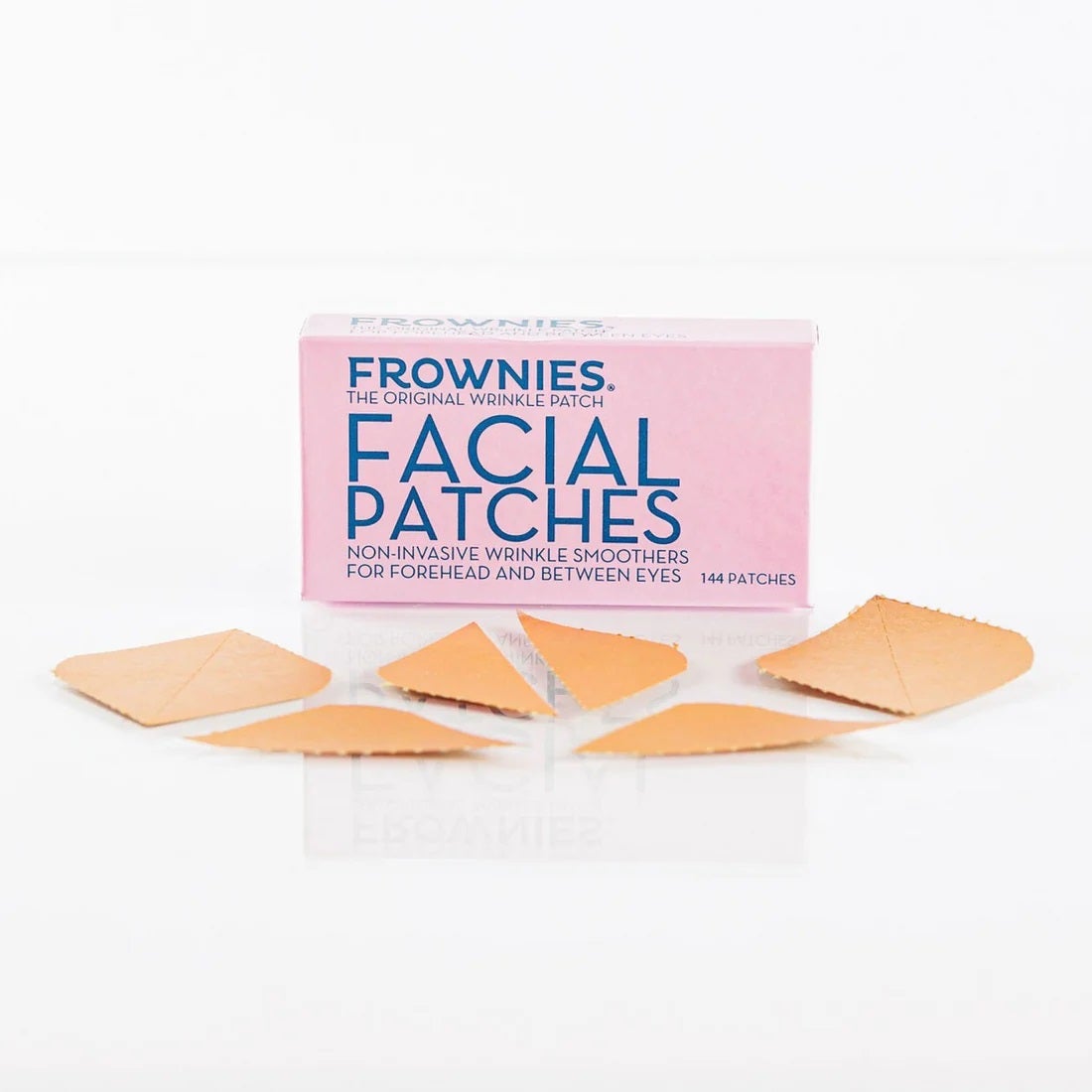
The beauty trick known as "face taping" is experiencing a resurgence on social media.
This technique, which involves applying tape to the face to smooth wrinkles, is being touted as a simple solution for achieving a more youthful appearance.
But does it really work?
The concept of taping for therapeutic purposes isn't new.
Developed in the 1970s by Japanese chiropractor Dr Kenzo Kase, taping was initially used to aid muscle recovery and improve circulation.
Depending on the application, the tape could either stimulate or relax muscles. However, the cosmetic application of face taping is a more recent development.
"It involves placing tape on the face in certain positions around the eyes, mouth and forehead to restrict movement, with the aim of reducing the appearance of fine lines and wrinkles," explains Dr Leah Totton of Dr Leah Cosmetic Clinics & Skincare.
The tape works by lifting the skin, allowing oxygen to flow beneath, which can reduce puffiness and soften lines.

Does it actually prevent wrinkles?
When applied correctly, sleeping with face tape can certainly help skin look more rejuvenated than if you’d just gone to sleep on a cotton pillowcase.
“Movement in the face will be restricted overnight when the tape is on, so when you wake up in the morning any fine lines may be less visible,” says Dr Totton.
“Fine lines and wrinkles are a natural part of the ageing process due to a reduction in the skin’s collagen and elastin, but the action of repeatedly frowning may cause fine lines and wrinkles to be more prominent. Facial taping could combat this.”
However, a refreshed and reduced appearance of wrinkles could be a hoax.
“This is due to the tape holding moisture against the skin, creating a temporary plumping effect,” explains medical director of Cosmedics Skin Clinics, Dr Ross Perry.
“However, it does not address the underlying muscles that cause wrinkles, which is what Botox is designed to do. In reality, this is only a short-term fix, with the effects wearing off within a few hours.”
How facial taping compares to Botox
As non-invasive and a lot more affordable, face taping could be a great – albeit temporary – alternative to Botox injections.
“[Facial taping] helps prevent the repetitive expressions that contribute to wrinkle formation, much like how Botox works by limiting muscle contractions,” explains aesthetician and owner of Swann Beauty, Kelly Swann.
“But the results from taping are purely surface-level, providing only a temporary smoothing effect.
“It’s a quick fix that can be useful for special occasions, but it doesn’t offer any long-term benefits and doesn’t address the cause of the wrinkles.”
Botox (or Botulinum toxin) on the other hand is an anti-wrinkle treatment that works by temporarily paralysing muscles in injected areas.
“The results from Botox can last anywhere from three to six months, making it a much more enduring solution,” explains Ms Swann. “Unlike facial taping, Botox tackles the root cause of wrinkles by limiting muscle movement, which is why its effects last much longer and are more noticeable.”
Face taping’s biggest downfall however, is its longevity. “The effects of cosmetic treatments such as Botox can last for several months, where as any effects seen from face taping will last just a few hours,” says Dr Totton.
The side effects: From skin irritation to skin laxity
Facial taping sounds like a great, quick fix alternative to Botox and anti-ageing injections, offering a lifted look for a fraction of the price.

But what happens when you prolong the use of face taping?
“If the tape is too tight then this can actually lead to laxity in other areas,” explains Dr Totton, “the motion of the skin being pulled when the tape is removed can also lead to this.
“A medical tape must be used, as it needs to be breathable,” she says. “Face tape can certainly cause irritation to the glue – especially for those with sensitive skin – more so when used extremely regularly.”
“Another important consideration is that taping the face especially around the eyes and forehead restricts natural muscle movement,” explains Dr Perry.
“Since facial muscles continue to function even during sleep, this restriction could potentially train them to work harder and become stronger over time, which may actually accelerate the aging process rather than prevent it.”
Scrubs star Eliza Coupe responds after fans express concern at premiere look
We need to stop diagnosing each other with autism and ADHD
Prince William makes playful dig at Clarkson’s Farm star Kaleb Cooper’s clothes
Tributes pour in for Joshua Blackledge as rising TikTok star dies, aged 16
Sydney Sweeney ‘calls off wedding’ after ‘major issues’ with fiancé







